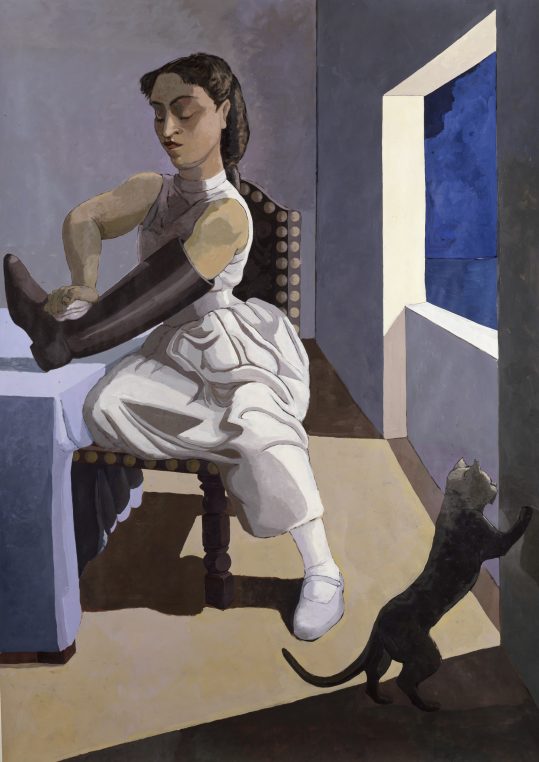
The Policeman’s daughter, 1987, private collection, © Copyright Paula Rego Courtesy Marlborough Fine Art
At 83, Portuguese born British artist Paula Rego is as violent as ever in her show at Musée de l’Orangerie. I fell in love with her work in November 1988 in London, when she exhibited at the Serpentine gallery and one of the paintings, “The Policeman’s daughter”, which so struck me then, is also here. “The Cruel Stories” is about fairy tales inspired by Louise Bourgeois’ spiders, Goya and Daumier dark prints, Jane Eyre and James Ensor. Her culture is as wide as her modernity and all the themes she develops are strikingly contemporary. There is a parallel show of her work at Galerie Sophie Scheidecker, behind Place des Vosges.

The Dance, 1988, Private Collection / Bridgeman Images. This was painted just after her husband’s death
There is nothing pleasant in Paula Rego’s pastels and acrylic paintings. The way she describes women and young girls in tragic situations is always disconcerting at first, the bestiality and cruelty of her images in “Scavengers” and “Dancing Ostriches” shocks the eye and translates her own suffering throughout life.
She started working on fairy tales when she received a scholarship from the Gulbenkian Foundation in 1975. She was already 40 and the mother of three children with husband Victor Willing, whom she had met at the Slade School of fine Arts in 1952. He immediately painted a portrait of her and seduced her even though he was married. They eventually moved to Portugal to live together, five years later. He was close friends with David Hockney and Lucian Freud.
Her son Nick Willing directed a documentary on her life “Paula Rego: Secrets & Stories”, where she uncovers many personal feelings. It was aired on BBC 2 in 2017. It shows some of her depression pictures and she unveils the difficult relationship she had with her artist husband who died of multiple sclerosis at 60.
“Girls with dog”, 1986, starts the show with a very strong note of young girls dressed in Victorian clothes dominating a dog. Then a corridor opens up on her studio filled with dolls and papier mâché accessories that she includes in her paintings.
Peter Pan, the Comtesse de Ségur, Arthur Rackham influence her series of “Nursery Rhymes” full of punishments and advice on children’s education. Dante, Gustave Doré, Goya, Lewis Caroll and Daumier are all strong influences on her prints. Later in 1987, the play by Jean Genêt “Les Bonnes” (the maids) inspire her a fabulous painting. Pinocchio is another theme and a picture shows her son in law, the talented Australian sculptor Ron Muek, treating his son like a puppet.
One of the strongest pieces in the show is “Angel” (The Crime of Father Amaro series), a very large pastel of a woman with a sword, a modern feminist hero. It refers to a book by José Maria de Eça de Queiroz, published in 1875 in Portugal, which describes the love between Father Amaro, a catholic priest, and the young Aurelia who becomes mad after her baby boy is killed at birth for fear scandal. It is strangely actual in its theme.
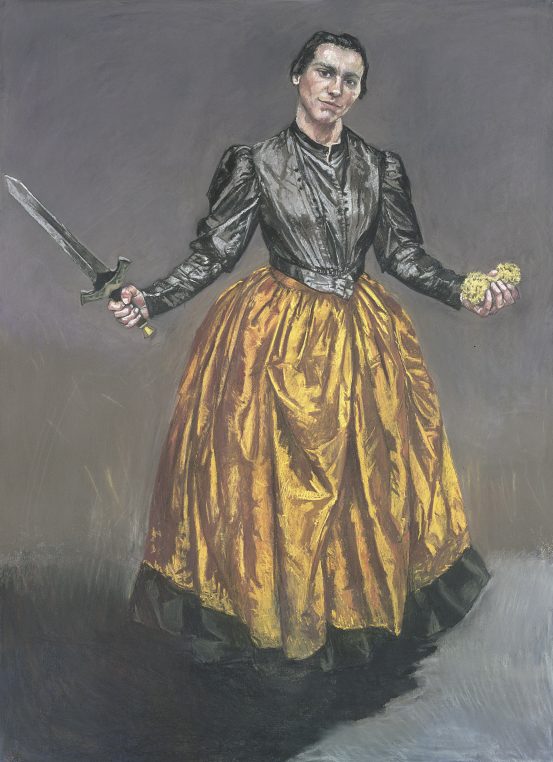
Angel (The Crime of Father Amaro series), 1998, collection of the artist, photo Private Collection / Bridgeman Images
Paula Rego has always fought for women’s rights and this show gives a good idea of how violently she feels about it. Until January 14 at l’Orangerie, and at Sophie Scheidecker gallery until November 7.
Share this Post
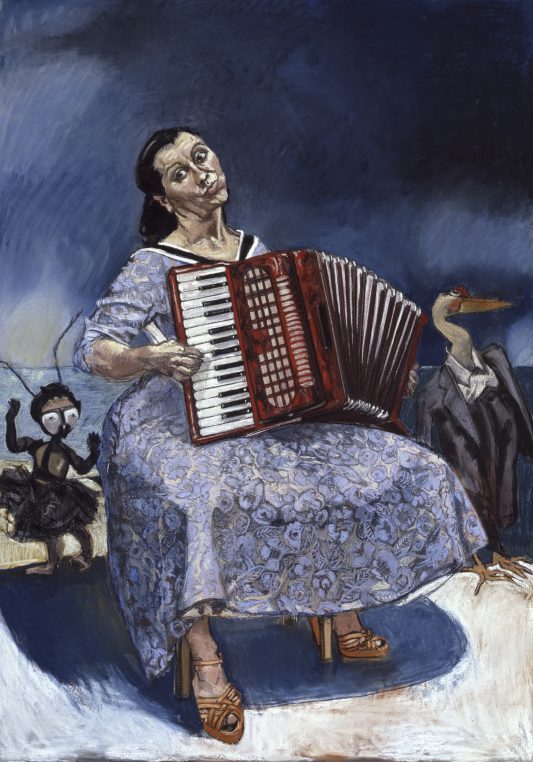
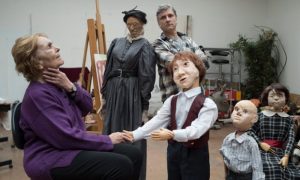
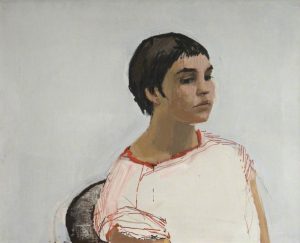

One Comment on “Paula Rego is so contemporary with her “Cruel stories””
Oui, Laure, effectivement, la violence est partout chez cette artiste. Parfois même doublée de tristesse et d’amertume…
Mais il y a aussi, notamment dans “The policeman’s daughter”, cet extraordinaire blanc, qui me rappelle celui, tellement magique, de Zurbaran…
Paula Rego ou “le cri”…